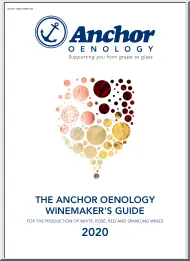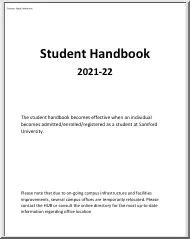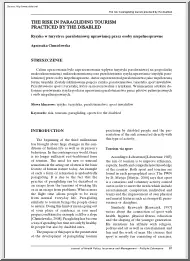Értékelések
Nincs még értékelés. Legyél Te az első!
Mit olvastak a többiek, ha ezzel végeztek?
Tartalmi kivonat
A Non-Racer's Guide to Racing Boating is pretty unique as a recreation that shares a field of play between racers, cruisers, anglers, and people at work, in all sorts of sail, motor, and human powered craft. With no grid, lanes, starting box, or white lines, the start and course of a sailing race can be pretty confusing for the racers: it is even more difficult to work out what’s happening when you are not involved with the race at all. The aim of this feature by Mark Rushall is to give some insights to non-racers to make their voyage through the field of play in Chichester Harbour a little less stressful. Where is the start? There are two basic types of start, known as 'committee boat' starts, and 'fixed line' starts. 'Committee boat' sounds grand, but it can be as simple as a small rib with a temporary flagstaff. Most clubs use a more traditional launch, or occasionally a cruising yacht. Sailors enjoy a committee boat start because the first leg
of the race can be set directly upwind, giving lots of tactical opportunities. One end of the committee boat start line will be the flagstaff in the boat, usually flying an orange flag, while the other end will be a nearby mark: either a permanent yellow harbour racing mark, a temporary laid inflatable mark or flag mark, or occasionally another committee launch, again with orange flag. Expect the line to be approximately at right angles to the wind, and around 200m long, depending on the number of boats in the start. 'Fixed line' well you don't really expect it to be that easy do you? Most of the sailing clubs have more than one 'fixed line' start. One end of the line will be on shore, normally the main sailing club flagstaff, though some 18 clubs have a separate starting base: for example Emsworth Slipper Sailing Club has a starting box on the Mill Pond wall. Lots of activity, men in caps, flag waving, and horn blowing, with a number of dinghies in a
confined space are pretty good indications that a fixed line start is under way. Some clubs have several choices for the outer end of their fixed line start, depending on wind direction and course choice, for example HISC have a choice of 'North', 'East', and 'South' start line. The race officials will usually try to choose the line that’s as close to right angles to the wind as possible, but the only way to be certain is to watch the grouping of the boats as start time approaches. Which brings us to: TIP: top racers spend time before their start sighting transits from each end of the line: this might help you to locate the other end! Chichester Harbour Area of Outstanding Natural Beauty lowered at the start. A class flag, indicating which boats are about to start, is hoisted at the five-minute warning signal and also dropped at the start. The real flag nerds may notice that in special circumstances the race team may use flag 'I',
'Z', or a black flag rather than the Blue Peter: this is a traditional punishment for trigger happy fleets: fortunately this is infrequent in the harbour! Hayling Island Sailing Club fixed line starts When is the start? Sailing from most harbour clubs is tide dependent, so start times vary week to week. If it's a lunchtime tide in the summer, they’ll all be out! The big racing clubs that are not tide dependent, and race in the main part of the harbour, are Hayling Island Sailing Club (HISC) and Itchenor Sailing Club (ISC). HISC normally race on Saturday afternoons and most of Sunday, with each race consisting of up to six consecutive mainly dinghy starts. Some starts are true one design starts, where all boats are the same design, whereas some are mixed fleets whose results are calculated on handicap; the boat which appears last may actually be winning! There are a couple of TIP: Try to avoid other flags that are worth sailing across keeping an eye out for. First
the postponement a start line if flag: that's the red and flags are flying white striped pennant. In and the start theory nothing can hapis in sequence. pen while this is flying before the start. Before the start, For trigger-happy rac- if the line is near ers, the 'First Substitute' a main channel, burgee plus two sound signals indicate a multiple racers are asked false start: the race will to leave a clear shortly be restarted so pathway outside watch out for all of the racthe start line. ers unexpectedly turning back. Itchenor normally race all day Saturday and Sunday morning, with up to four keelboat and six dinghy starts. If the weather is good, clubs often run further races 'back to back': if the boats are milling about after a race they are probably waiting for the next one. TIP: look for signs that racing is about to start, especially flags on flag poles, groups of boats sailing slowly, sound signals. Racing is generally run on a five-minute
sequence, with flag and sound signals at 5, 4, and 1 minute before the start, and at start time. The universal flag to watch out for is flag 'P': the Blue Peter: this is hoisted four minutes before the start and www.conservancycouk 19 TIP: Give groups of boats near a racing mark an extra wide berth. And be aware that each club may be running its own race at the same time: they may not all be rounding the mark the same way! TIP: When space is constricted, and there are lots of racers sailing in different directions, the best solution is to make your intention clear in plenty of time, keep your speed moderate and constant, and avoid last minute course alterations. Start Line What happens next? Once a class has started, there is usually a five minute period to the next: for the keelboats this is often stretched to 10 minutes. The flag sequence remains the same for each start. Unless there is a strong tactical reason to do otherwise, you will see that most of the fleet
will start on starboard tack: that’s with the wind coming from their right hand side. That’s because this is the right of way tack. So the safest way to sneak through between starts is around the right hand side, as in the diagram. The rest of the race You can get a little more understanding on what might happen next by reading the 'In Harmony' booklet produced by the Conservancy. But if you see racing boats converging near a racing mark, with greater activity, and lots of inward focus, they are probably about to round the mark: watch out for unexpected course alterations! Will they keep clear? The 'collregs' apply between racing and nonracing boats in the harbour: these are also summarized on the Conservancy website. 20 Committee Boat But if there is time and space, the racers will always appreciate it if other harbour users make a clear, early move to pass behind and to leeward of a group of racing boats. There are two things that really can ruin a racers
day. • A big boat passing through on the windward side takes away all motive power. • The wash from a motorboat accelerating around the front of a group of boats kills their speed. The biggest looking boats are not always the ones with the most draft, so sailing or motoring around the front of a group of Itchenor keelboats that are heading for a sand bank may have more serious consequences than just making you unpopular! What’s the difference between the boats? We have an amazing cross section of boats racing in the harbour: from the 100+ year old traditional keel boat classes of Itchenor to the 30kg hydrofoiling Moths of Hayling. Each has its own characteristic (and sail insignia): I’ve very roughly put them into five groups. Traditional keelboats: the Sunbeams (V), Swallows (S), and X boats (X) of Itchenor Chichester Harbour Area of Outstanding Natural Beauty enjoy incredibly close class racing. By modern standards they are slow in all directions, and shallow draft,
so tide features strongly in their racing strategy. You will often see them creeping along the shallows where the tide is weakest. They are heavy for their size: don't expect fast course alterations. The RS Elites of Hayling are a modern design with comparable characteristics. Sit out dinghies: From the classic dayboats of Bosham, through the double handed Merlins (Λ) single handed Solos (S) and Teras of Hayling, the Olympic class Finns (~) of Mengham to the red sailed Mirrors (M) of Itchenor, these form the backbone of racing in the harbour. They are generally manoeuvrable and predictable I’d include the Flying fifteens (ff) keelboats of Hayling in this category. Watch out for the more modern boats with asymmetric spinnakers, like the RS200’s: this type of spinnaker will not set directly downwind so they 'zig zag' downwind just as they do upwind. Trapeze dinghies: Traditional trapeze boats like the Osprey (O), and Fireball () behave similarly, but they are bigger,
faster, and may appear a little less manageable in strong winds. TIP: the only way to control a big gust with the asymmetric hoisted is to turn away from the wind: leave a wide berth in gusty conditions Modern trapeze boats with asymmetric spinnakers like the International 14 (14) and RS800 need more time and space to make big manoeuvres, and are fairly restricted by depth. With the asymmetric spinnaker hoisted, they have a narrow range of sailing angle to the wind: outside this comfort zone they become very unstable and unpredictable. Hydrofoiling Moths: so much faster than other harbour users that they treat us as stationery objects: keep a steady course and they will keep clear! www.conservancycouk Cruisers: Cruisers only occasionally race in the harbour when the weather is miserable and all sensible harbour users are safely at home. The cruisers should be well versed on the 'collregs', and it is pretty obvious from the movement of bodies on the boats, and general
shouting, when they are about to manoeuvre. Special events As well as its regular racing, each club holds regattas and open meetings through the year. The basic format is the same, but fleets are often larger. The biggest harbour event is Fed Week, organized from HISC for a week in August, around high tide. Look out for guidance on any special events on the Conservancy website. HISC also runs occasional pursuit races, including the popular open event, the Glyn Charles Memorial Pursuit race. In a pursuit race, only the first start (the slowest class) has a formal 5-minute countdown: subsequent fleets start at predetermined times indicated by a number displayed on the committee boat. The starting sequence, from slowest to fastest boat, can last in excess of an hour. However there should always be plenty of room to pass the start line safely on the main channel side. Even on the busiest summer Sunday, there is plenty of room for every type of water lover. A little awareness of what each
is trying to achieve always helps! Find Out More Mark Rushall (www.rushallnet) is a top sailing coach, author, and sailing journalist. When not partaking in or talking about racing, he is frequently seen cruising the harbour and beyond in his 50 year old classic yacht, Rag Doll. See www.conservancycouk and search 'Navigate Safely' to read the leaflets mentioned in this article and to sign up for the Navigation eNewsletter. 21
of the race can be set directly upwind, giving lots of tactical opportunities. One end of the committee boat start line will be the flagstaff in the boat, usually flying an orange flag, while the other end will be a nearby mark: either a permanent yellow harbour racing mark, a temporary laid inflatable mark or flag mark, or occasionally another committee launch, again with orange flag. Expect the line to be approximately at right angles to the wind, and around 200m long, depending on the number of boats in the start. 'Fixed line' well you don't really expect it to be that easy do you? Most of the sailing clubs have more than one 'fixed line' start. One end of the line will be on shore, normally the main sailing club flagstaff, though some 18 clubs have a separate starting base: for example Emsworth Slipper Sailing Club has a starting box on the Mill Pond wall. Lots of activity, men in caps, flag waving, and horn blowing, with a number of dinghies in a
confined space are pretty good indications that a fixed line start is under way. Some clubs have several choices for the outer end of their fixed line start, depending on wind direction and course choice, for example HISC have a choice of 'North', 'East', and 'South' start line. The race officials will usually try to choose the line that’s as close to right angles to the wind as possible, but the only way to be certain is to watch the grouping of the boats as start time approaches. Which brings us to: TIP: top racers spend time before their start sighting transits from each end of the line: this might help you to locate the other end! Chichester Harbour Area of Outstanding Natural Beauty lowered at the start. A class flag, indicating which boats are about to start, is hoisted at the five-minute warning signal and also dropped at the start. The real flag nerds may notice that in special circumstances the race team may use flag 'I',
'Z', or a black flag rather than the Blue Peter: this is a traditional punishment for trigger happy fleets: fortunately this is infrequent in the harbour! Hayling Island Sailing Club fixed line starts When is the start? Sailing from most harbour clubs is tide dependent, so start times vary week to week. If it's a lunchtime tide in the summer, they’ll all be out! The big racing clubs that are not tide dependent, and race in the main part of the harbour, are Hayling Island Sailing Club (HISC) and Itchenor Sailing Club (ISC). HISC normally race on Saturday afternoons and most of Sunday, with each race consisting of up to six consecutive mainly dinghy starts. Some starts are true one design starts, where all boats are the same design, whereas some are mixed fleets whose results are calculated on handicap; the boat which appears last may actually be winning! There are a couple of TIP: Try to avoid other flags that are worth sailing across keeping an eye out for. First
the postponement a start line if flag: that's the red and flags are flying white striped pennant. In and the start theory nothing can hapis in sequence. pen while this is flying before the start. Before the start, For trigger-happy rac- if the line is near ers, the 'First Substitute' a main channel, burgee plus two sound signals indicate a multiple racers are asked false start: the race will to leave a clear shortly be restarted so pathway outside watch out for all of the racthe start line. ers unexpectedly turning back. Itchenor normally race all day Saturday and Sunday morning, with up to four keelboat and six dinghy starts. If the weather is good, clubs often run further races 'back to back': if the boats are milling about after a race they are probably waiting for the next one. TIP: look for signs that racing is about to start, especially flags on flag poles, groups of boats sailing slowly, sound signals. Racing is generally run on a five-minute
sequence, with flag and sound signals at 5, 4, and 1 minute before the start, and at start time. The universal flag to watch out for is flag 'P': the Blue Peter: this is hoisted four minutes before the start and www.conservancycouk 19 TIP: Give groups of boats near a racing mark an extra wide berth. And be aware that each club may be running its own race at the same time: they may not all be rounding the mark the same way! TIP: When space is constricted, and there are lots of racers sailing in different directions, the best solution is to make your intention clear in plenty of time, keep your speed moderate and constant, and avoid last minute course alterations. Start Line What happens next? Once a class has started, there is usually a five minute period to the next: for the keelboats this is often stretched to 10 minutes. The flag sequence remains the same for each start. Unless there is a strong tactical reason to do otherwise, you will see that most of the fleet
will start on starboard tack: that’s with the wind coming from their right hand side. That’s because this is the right of way tack. So the safest way to sneak through between starts is around the right hand side, as in the diagram. The rest of the race You can get a little more understanding on what might happen next by reading the 'In Harmony' booklet produced by the Conservancy. But if you see racing boats converging near a racing mark, with greater activity, and lots of inward focus, they are probably about to round the mark: watch out for unexpected course alterations! Will they keep clear? The 'collregs' apply between racing and nonracing boats in the harbour: these are also summarized on the Conservancy website. 20 Committee Boat But if there is time and space, the racers will always appreciate it if other harbour users make a clear, early move to pass behind and to leeward of a group of racing boats. There are two things that really can ruin a racers
day. • A big boat passing through on the windward side takes away all motive power. • The wash from a motorboat accelerating around the front of a group of boats kills their speed. The biggest looking boats are not always the ones with the most draft, so sailing or motoring around the front of a group of Itchenor keelboats that are heading for a sand bank may have more serious consequences than just making you unpopular! What’s the difference between the boats? We have an amazing cross section of boats racing in the harbour: from the 100+ year old traditional keel boat classes of Itchenor to the 30kg hydrofoiling Moths of Hayling. Each has its own characteristic (and sail insignia): I’ve very roughly put them into five groups. Traditional keelboats: the Sunbeams (V), Swallows (S), and X boats (X) of Itchenor Chichester Harbour Area of Outstanding Natural Beauty enjoy incredibly close class racing. By modern standards they are slow in all directions, and shallow draft,
so tide features strongly in their racing strategy. You will often see them creeping along the shallows where the tide is weakest. They are heavy for their size: don't expect fast course alterations. The RS Elites of Hayling are a modern design with comparable characteristics. Sit out dinghies: From the classic dayboats of Bosham, through the double handed Merlins (Λ) single handed Solos (S) and Teras of Hayling, the Olympic class Finns (~) of Mengham to the red sailed Mirrors (M) of Itchenor, these form the backbone of racing in the harbour. They are generally manoeuvrable and predictable I’d include the Flying fifteens (ff) keelboats of Hayling in this category. Watch out for the more modern boats with asymmetric spinnakers, like the RS200’s: this type of spinnaker will not set directly downwind so they 'zig zag' downwind just as they do upwind. Trapeze dinghies: Traditional trapeze boats like the Osprey (O), and Fireball () behave similarly, but they are bigger,
faster, and may appear a little less manageable in strong winds. TIP: the only way to control a big gust with the asymmetric hoisted is to turn away from the wind: leave a wide berth in gusty conditions Modern trapeze boats with asymmetric spinnakers like the International 14 (14) and RS800 need more time and space to make big manoeuvres, and are fairly restricted by depth. With the asymmetric spinnaker hoisted, they have a narrow range of sailing angle to the wind: outside this comfort zone they become very unstable and unpredictable. Hydrofoiling Moths: so much faster than other harbour users that they treat us as stationery objects: keep a steady course and they will keep clear! www.conservancycouk Cruisers: Cruisers only occasionally race in the harbour when the weather is miserable and all sensible harbour users are safely at home. The cruisers should be well versed on the 'collregs', and it is pretty obvious from the movement of bodies on the boats, and general
shouting, when they are about to manoeuvre. Special events As well as its regular racing, each club holds regattas and open meetings through the year. The basic format is the same, but fleets are often larger. The biggest harbour event is Fed Week, organized from HISC for a week in August, around high tide. Look out for guidance on any special events on the Conservancy website. HISC also runs occasional pursuit races, including the popular open event, the Glyn Charles Memorial Pursuit race. In a pursuit race, only the first start (the slowest class) has a formal 5-minute countdown: subsequent fleets start at predetermined times indicated by a number displayed on the committee boat. The starting sequence, from slowest to fastest boat, can last in excess of an hour. However there should always be plenty of room to pass the start line safely on the main channel side. Even on the busiest summer Sunday, there is plenty of room for every type of water lover. A little awareness of what each
is trying to achieve always helps! Find Out More Mark Rushall (www.rushallnet) is a top sailing coach, author, and sailing journalist. When not partaking in or talking about racing, he is frequently seen cruising the harbour and beyond in his 50 year old classic yacht, Rag Doll. See www.conservancycouk and search 'Navigate Safely' to read the leaflets mentioned in this article and to sign up for the Navigation eNewsletter. 21




